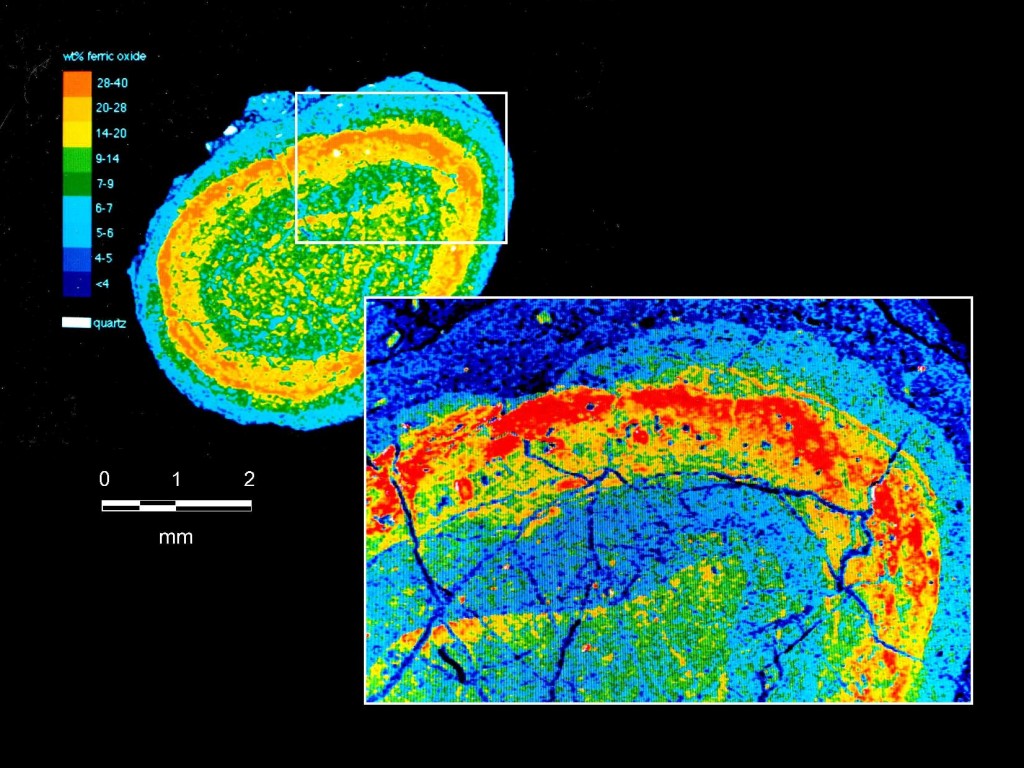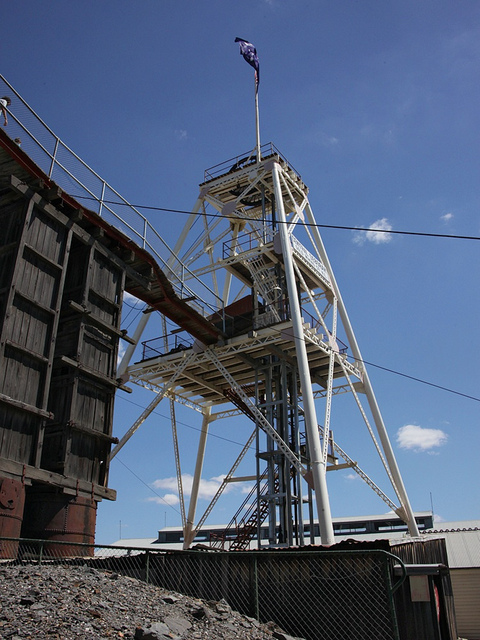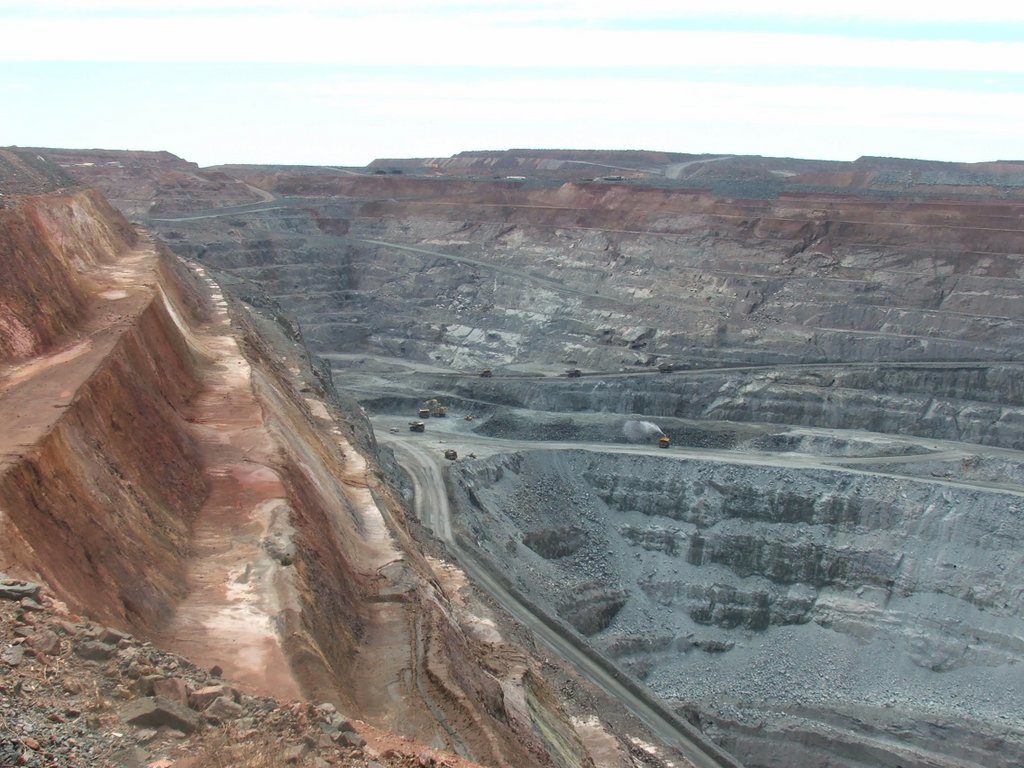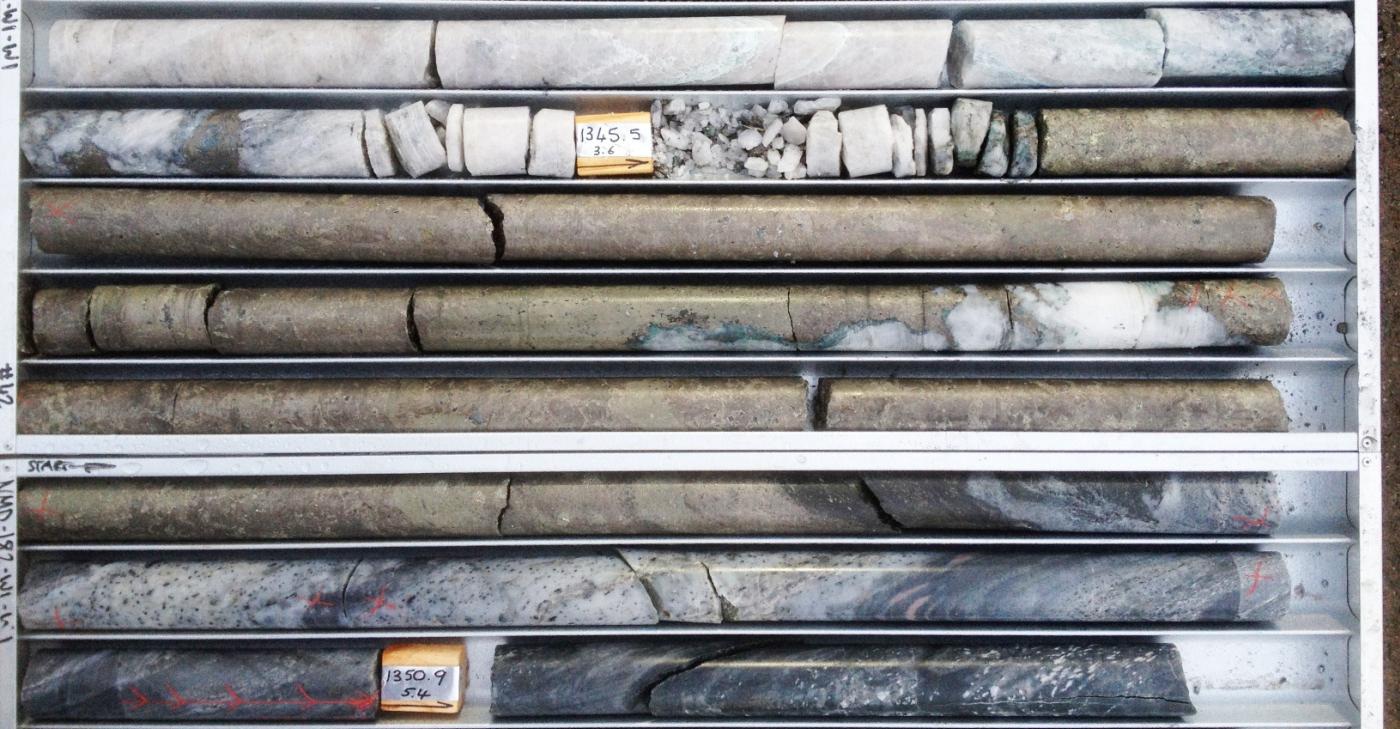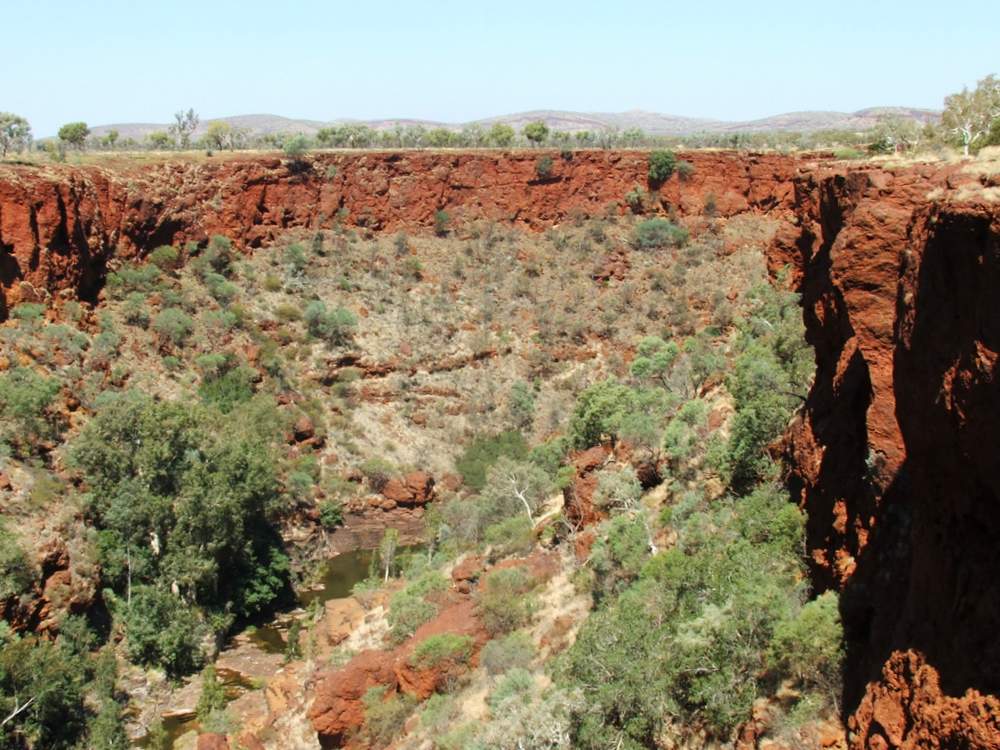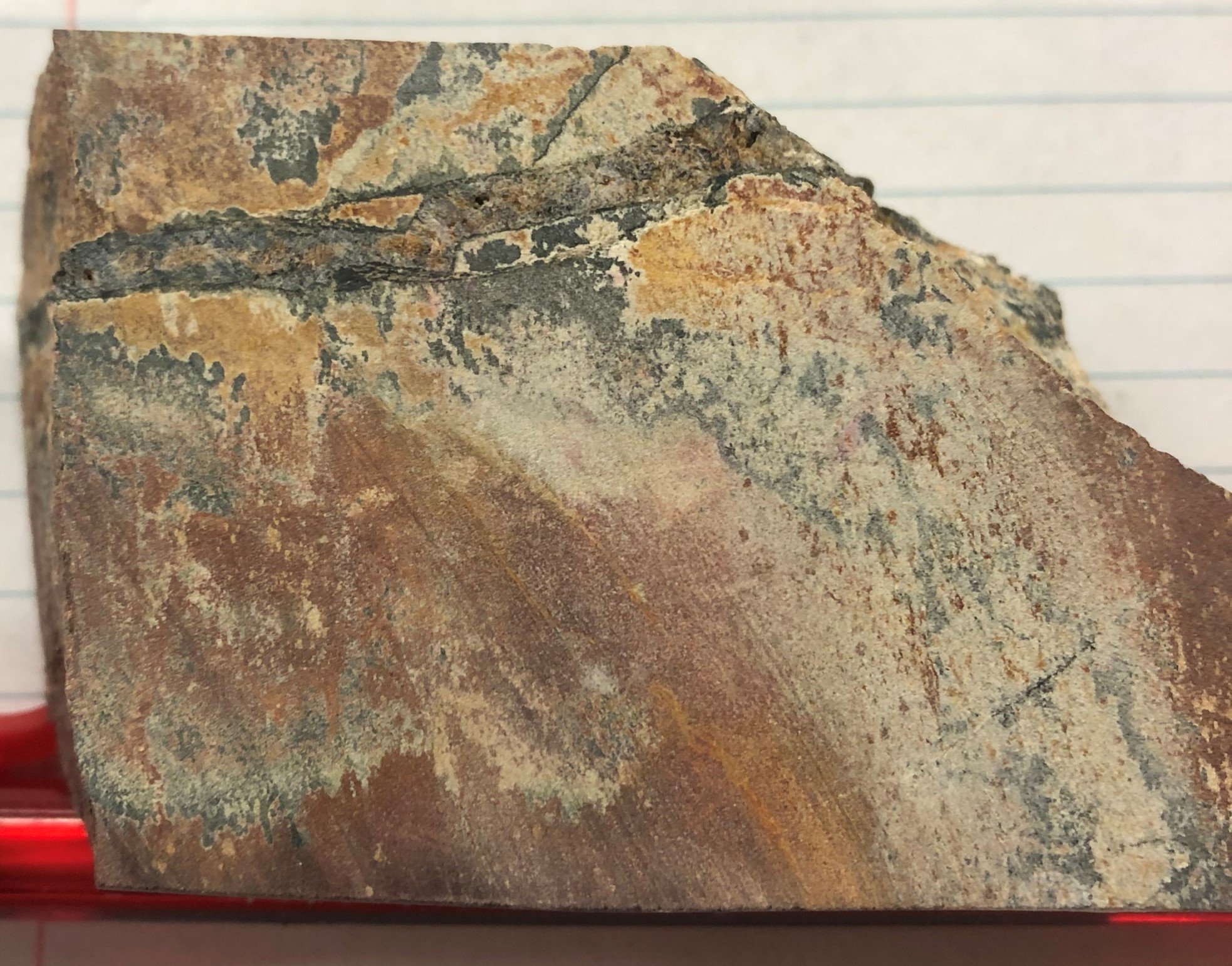Tanzanite is one of the most desirable gemstones today. Even though tanzanite is a newly-discovered mineral, it rivals the big four gems in popularity. Tanzanite is commercially mined in just one area in the world–the Merelani Hills of Tanzania–which makes the stone even rarer than diamonds.
Discovered in 1967, Tanzanite is a relatively new gemstone. A Portuguese tailor and gold prospector named Manuel de Souza found a tanzanite sample in the Mirerani area of Tanzania. With the help of prospectors, gemologists, and researchers, it was eventually determined that this unique stone was a variety of the mineral zoisite.
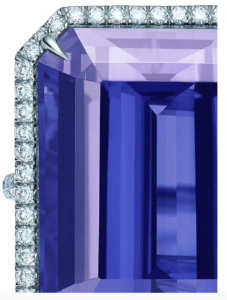
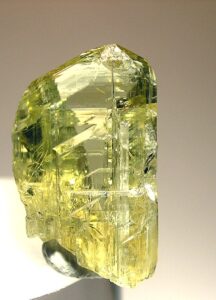
The gem was popularized by American jeweler Tiffany and Co. They decided to change the name from “blue zoisite” to tanzanite in honor of its home country. Tiffany’s wanted to take advantage of the fact that the gem is only found in one place in the world. Gemstone trends are strongly dependent on marketing and the fashion industry, and tanzanite has become wildly popular over the past 50 years.
Mineralogy
Mineralogically, tanzanite is a vanadium-bearing blue variety of mineral zoisite (Ca2Al3(SiO4)(Si2O7)O(OH)). Zoisite naturally occurs in a wide range of colors: colorless, gray, yellow, brown, pink, green, blue, and violet. Vanadium inclusions within the mineral structure give zoisite its blue color. When zoisite is subjected to heat, vanadium and titanium change their oxidation state and produce magnificent violet and blue hues. The trade name “tanzanite” can be applied only to a color variety of zoisite that ranges from blue to bluish-purple to bluish-violet.
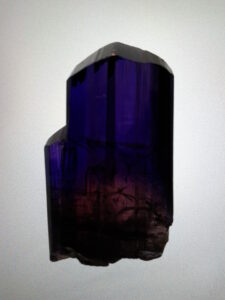
Tanzanite has a unique physical property known as pleochroism. Due to this phenomenon, tanzanite shows different colors from different angles, which can be seen in both a rough and polished state. This mineral is even more unique than typical pleochroic minerals, as it is trichroic. That means it’s possible to observe three different colors, not just two. It’s possible to see pure blue from one side, deep violet from another, and dark red from the third in saturated and transparent stones. Scientifically, trichroic pleochroism can be explained by different crystallographic axes of the mineral. Gem artisans know how to cut tanzanite to uncover deeper blue hues.
Tanzanite can form giant crystals. In fact, the largest known tanzanite crystals were discovered this year by a small-scale miner in Tanzania. The crystals weighed 9.27 kg (20.4 lb) and 5.1 kg (11.3 lb) and were sold to the Tanzanian government for $3.3 million.
Gemology
Most of the tanzanite crystals found in mines are transparent or yellowish-brown. Today 90-95% of tanzanite gems are heat treated. This procedure enhances the blue and violet colors and removes yellow, green, or brownish hues.
Heat treating involves exposing the tanzanite crystals to a temperature of 400-700°C for a short time. The resulting blue color is stable and will not change. Natural blue tanzanite gets its color from exposure to heat during metamorphism and is highly valued. Because most tanzanite on the market has been heat-treated, this process does not impact price. However, it’s still a challenge for gemological laboratories to determine whether the stone was heat treated or not. Scientists agree that the name “tanzanite” can be given only to the blue-violet variety of zoisite, regardless of the color’s origin (heat treated or natural).
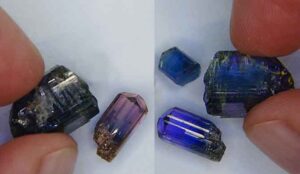
Another method of enhancing tanzanite is surface coating. A thin layer of paint is applied to the backside of the gem or the whole surface to make it appear more saturated in blue and violet colors.
The best size for cut tanzanite is 5 carats (1 gram; 1 carat = 0.2 g), which shows the finest and deepest colors. Smaller stones are usually less intense in color and look pale.
There is also an ultra-rare tanzanite species, which shows chatoyancy or cat’s eye effect. Such stones are highly prized and particularly valued by collectors.
Geological Setting
Gemstones typically form from regional metamorphism and hydrothermal alteration of preexisting rocks. Tanzanite, however, forms under very specific geological conditions. The world’s only tanzanite deposit, the Merelani deposit, is located in one of the world’s most highly mineralized zones — the Mozambique Orogenic Belt. This region is sometimes called the “the Gemstone Belt of East Africa.”
The host rocks are mainly graphitic gneisses, dolomitic marbles, and schists. They formed after the Pan-African tectonothermal event, which occurred about 600 million years ago. During this event, ancient continental blocks collided with each other during the gradual closure of the Mozambique Ocean. Hydrothermal fluids created during this process (rich in Ca, Mg, CO2, SO3 V, U, Sr, Zn) penetrated local faults, reacted with the bedrock, and caused tanzanite and other zoisites to form.
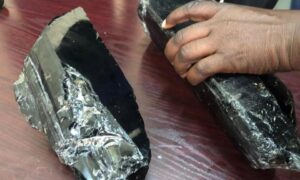
Tanzanite is mainly recovered from metamorphically deformed pegmatitic veins. Gems are found in a massive state closely associated with the graphitic schists. They are also found as prismatic crystals in small cavities inside the boudins. Boudins (sausage-shaped formations) are small pieces of pegmatites which were subjected to deformation.
The Merelani deposit is located in the Arusha region, Tanzania. The tanzanite mining area is about 8 km by 2 km and is split into four blocks (A, B, C, and D). Block C is the most promising and is mined by the Tanzanian company Tanzanite One. Small-scale artisanal miners also work in the area.
On average Merelani ore contains 52 carats (10.4 g) of tanzanite per ton. The estimated cost of tanzanite ore today is about $59 per carat, while the price of a cut stone rises sharply to $500-800 per carat.
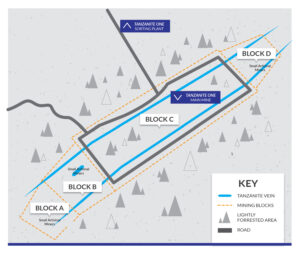
According to Tanzanite One, more than 1 million carats (200 kg) of tanzanite are extracted per year. Mine shafts at Block C currently reach a depth of 800 meters. Geological testing suggests that tanzanite resources exist until a depth of 2000 meters. However, mining at that depth is challenging and requires a significant mechanical equipment upgrade. Block C contains indicated, inferred, and total resources of 30.6, 74.4, and 105 million carats, respectively. These values suggest a life-of-mine of about 10-20 years at a production rate of 2.7 million carats per year.
Future Outlook
Some experts predict that the price of tanzanite will only grow higher. Tanzanite is only found in one location that may be mined out within the next 10-20 years, so this assumption is logical.
However, history has seen this situation before. Consider the gem Paraiba (a neon-blue copper-bearing variety of tourmaline). This stone was also discovered recently, in 1989. It was first found in the Brazilian state of Paraíba and named after this locality, as it was the only source of the gemstone. Today, commercial-value gemstones of copper-bearing tourmaline are mined from Mozambique and Nigeria. Of course, this situation has caused a discussion about whether the gemstone should be renamed. Customers are still attracted to Brazilian Paraiba, despite the fact that the quality is no different from the African varieties.
We shouldn’t forget that tanzanite is simply the trade-name of Vanadium-bearing zoisite. Deposits of that mineral exist across the world, especially in Austria, Germany, the U.S., and Russia. Also, gem-quality tsavorite (which forms in conditions similar to tanzanite) is found in Kenya, Tanzania, Madagascar, Pakistan, and Antarctica. It’s possible that tanzanite deposits could exist in those localities too.
Further reading:

